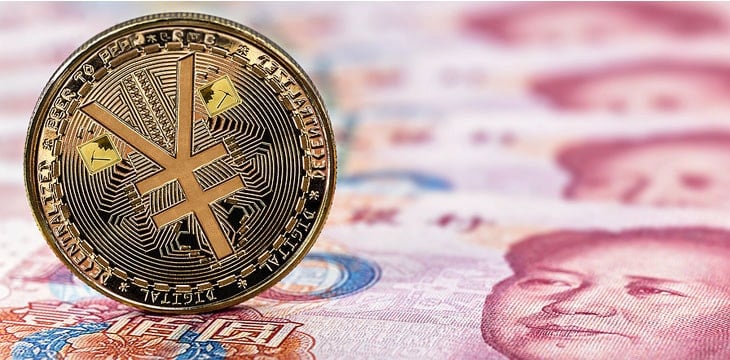Introduction to E-Yuan
China’s digital currency initiative, known as the E-Yuan, marks a significant milestone in the evolution of digital currencies. Unlike traditional fiat currencies, the E-Yuan is built on blockchain technology, which ensures security, transparency, and efficiency in digital transactions. At the heart of this innovation lies the decentralized nature of blockchain, which eliminates the need for intermediaries and central authorities, paving the way for a more inclusive financial system. One such platform that facilitates the trading of E-Yuan provides users with access to a secure and efficient environment for engaging in digital currency transactions – learn more about trading opportunities at Yuan Fortune.
Understanding Blockchain Technology
To comprehend the technology behind the E-Yuan, it’s essential to grasp the fundamentals of blockchain. At its core, blockchain is a distributed ledger that records transactions across a network of computers. Each transaction, or “block,” is cryptographically linked to the previous one, forming a chain of blocks. This decentralized and tamper-resistant structure ensures the integrity and immutability of data stored on the blockchain.
The Role of Blockchain in E-Yuan
Blockchain technology serves as the backbone of E-Yuan’s digital infrastructure, providing a secure and efficient platform for conducting transactions. By leveraging blockchain, the People’s Bank of China (PBOC) can issue, distribute, and track the circulation of the E-Yuan without the need for physical cash or centralized intermediaries. This not only streamlines the payment process but also reduces the costs associated with traditional banking systems.

Blockchain Features in E-Yuan
The E-Yuan’s blockchain incorporates several key features to ensure its functionality and reliability. One such feature is the consensus mechanism, which determines how transactions are validated and added to the blockchain. In the case of the E-Yuan, the PBOC employs a permissioned consensus mechanism, allowing only authorized participants to validate transactions. Additionally, smart contracts play a crucial role in automating and enforcing the terms of transactions, further enhancing the efficiency of the E-Yuan ecosystem.
Challenges and Solutions
Despite its numerous advantages, blockchain technology poses certain challenges, such as scalability and privacy concerns. In the case of the E-Yuan, the sheer volume of transactions and the need to maintain high throughput present scalability challenges. To address this issue, the PBOC is exploring various solutions, including sharding and layer-2 scaling solutions, to increase the capacity of the E-Yuan blockchain while maintaining its security and decentralization.
Privacy is another area of concern, as blockchain transactions are inherently transparent and immutable. To protect users’ privacy, the E-Yuan blockchain employs advanced cryptographic techniques, such as zero-knowledge proofs and ring signatures, to obfuscate transaction details while still ensuring their validity and integrity. This balance between privacy and transparency is crucial for maintaining trust in the E-Yuan ecosystem.
E-Yuan’s Impact on the Global Financial System
The introduction of the E-Yuan has significant implications for the global financial system, as it challenges the dominance of traditional fiat currencies and central banking systems. By leveraging blockchain technology, E-Yuan offers a more inclusive and efficient alternative to traditional payment systems, particularly in regions with limited access to banking services. Moreover, the interoperability of blockchain-based digital currencies could facilitate cross-border transactions and promote international trade and cooperation.
However, the rise of digital currencies like the E-Yuan also raises concerns about regulatory oversight and monetary sovereignty. As central banks around the world explore the possibility of issuing their digital currencies, policymakers must grapple with questions regarding financial stability, consumer protection, and the role of central banks in the digital age. Finding the right balance between innovation and regulation will be crucial for ensuring the long-term success and stability of digital currencies like the E-Yuan.
Future Prospects and Developments
Looking ahead, the future of the E-Yuan and blockchain technology is filled with promise and potential. As blockchain continues to evolve and mature, we can expect to see further advancements in scalability, privacy, and interoperability, making digital currencies even more accessible and efficient. Moreover, ongoing research and development efforts are exploring the integration of emerging technologies like artificial intelligence and the Internet of Things (IoT) with blockchain, opening up new possibilities for innovation in finance and beyond.
Conclusion
In conclusion, the E-Yuan represents a groundbreaking application of blockchain technology in the realm of digital currencies. By harnessing the power of blockchain, China is laying the foundation for a more inclusive, efficient, and resilient financial system. However, realizing the full potential of the E-Yuan will require collaboration and cooperation among governments, regulators, and industry stakeholders to address the challenges and opportunities that lie ahead. As we embark on this journey into the digital future, one thing is clear: blockchain technology will play a central role in shaping the way we transact, invest, and interact in the years to come.
















